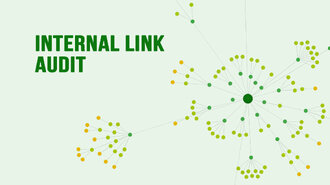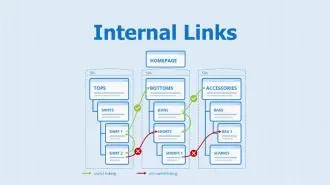Summary / TL;DR
The relationship between link building and on-page SEO is critical for improving search engine rankings, credibility, and website conversions. Link building, an off-page SEO method, attracts users through external endorsements and backlinks, while on-page SEO ensures a site is optimised with relevant keywords, quality content, technical performance, and internal links. These strategies work synergistically: strong on-page optimisation enhances link effectiveness, and quality backlinks improve authority and visibility. Effective execution boosts site metrics like bounce rate, time on site, and conversion rates. Ignoring either aspect can undermine SEO results, especially in competitive niches with high search volumes.
SEO, or search engine optimisation, is one of the more straightforward marketing concepts. It’s essentially about enhancing your visibility or rankings on search engines for particular queries.
Though understanding SEO is fairly straightforward, implementing it effectively can be quite challenging. The theory is clear, but the practical application isn’t always straightforward. This complexity has led to numerous companies offering SEO services and utilising link-building strategies. In reality, ranking a website isn’t as simple as it sounds on paper, and there’s no one-size-fits-all solution.
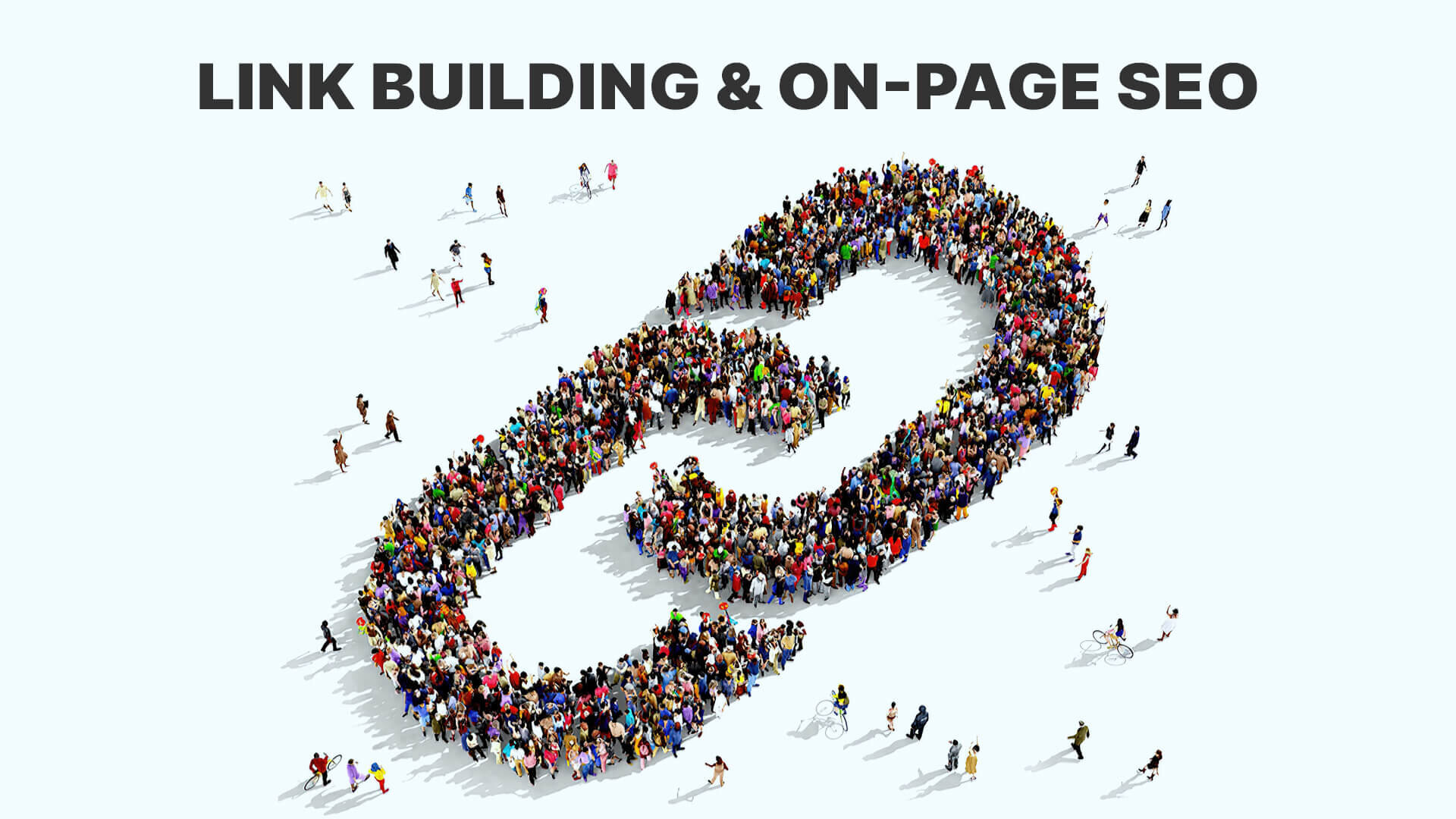
Part of this innate complexity is how SEO is a complicated web of interconnected, holistic practices that enhance a business’s online presence’s credibility. This is where many companies feel safer in the hands of a marketing or SEO agency, trained professionals with experience doing what they do best.
After all, SEO often relies on a feedback loop to generate credibility and trust in the eyes of the consumer, for example, link building and on-page SEO.
While link building and on-page SEO may sound like they have nothing to do with one another, like most things regarding ranking in the SERPs (Search Engine Results Pages), one impacts the other.
Grasping this relationship can boost your company’s online visibility, enhance conversions, and significantly improve traffic. However, every journey starts with a single step. If you’re keen to delve deeper into SEO and link building, keep reading!
Want to receive updates? Sign up to our newsletter
Each time a new blog is posted, you’ll receive a notification, it’s really that simple.
It’s All So Simple… In Theory
to first explore the mystical ties that bind link building in SEO with these two practices, we need to understand exactly what is meant when discussing them.
Link Building
Link building involves generating inbound links to your website. These backlinks act as endorsements, proving essential for acquiring high-quality links.
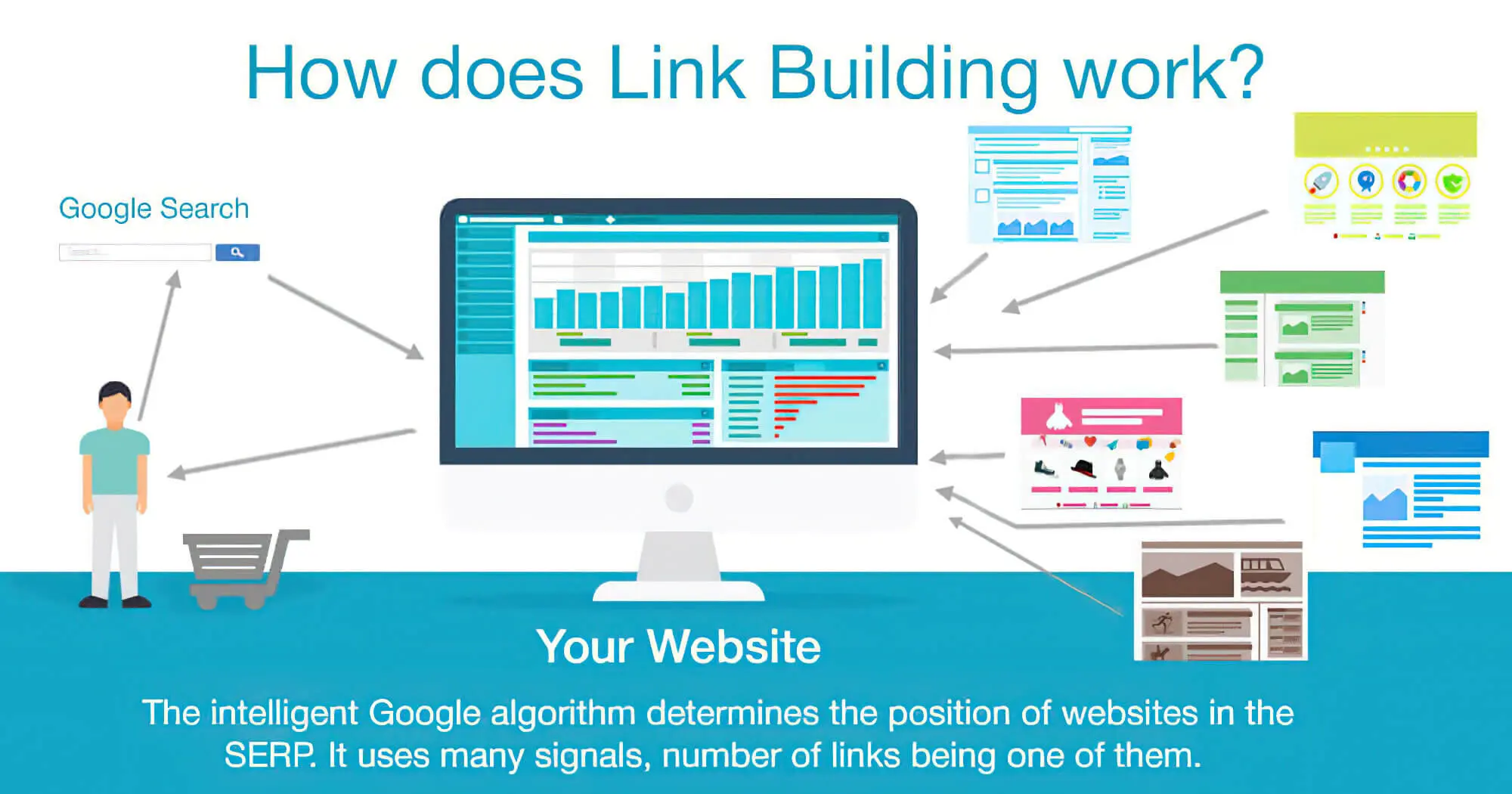
On-Page/On-Site SEO:
In on-page SEO, you focus on the elements of your website you have control over, such as content, internal links, meta tags, etc. Using this technique, you can optimise your website or page and use a cluster of relevant keywords and search terms.
As you can see, these pillars of SEO are pretty simple to understand. One spreads the word about your business through links from other websites, while relationship link-building efforts enhance the depth of quality your website provides and, consequently, your business in the eyes of your audience.
For on-page SEO link building to be effective, you need the on-page SEO to correlate and vice versa. For SEO link building to support on-page SEO as effectively as possible, you need link-building. This isn’t always the case, but you must execute both strategies in competitive markets with large search volume keywords.
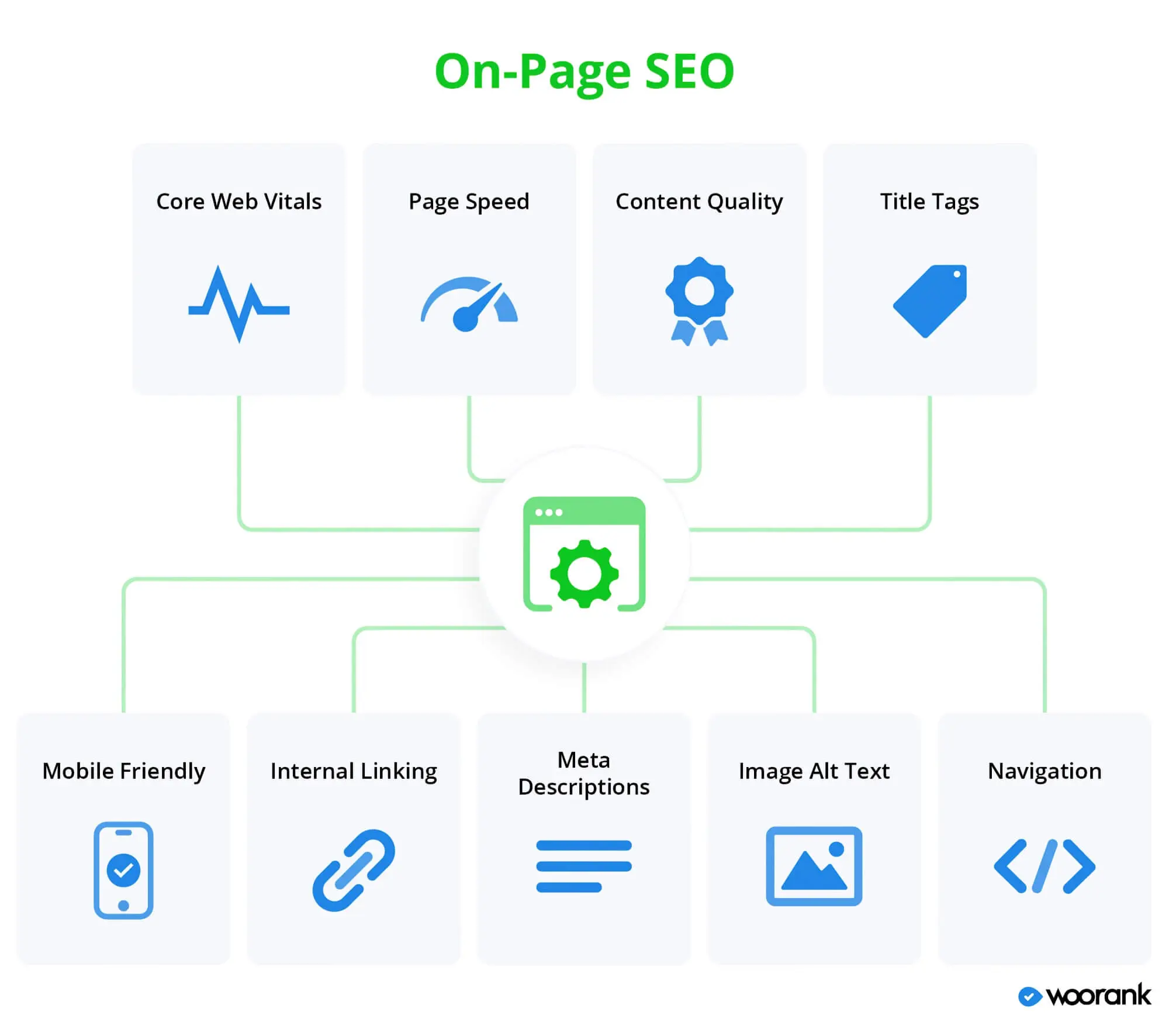
Working in SEO is akin to training mice to navigate a maze. Imagine the internet as this maze and the consumer as the mouse. SEO specialists need to determine the right incentives to guide the mouse smoothly through the desired path and ensure consistent behaviour with the appropriate rewards.
Once established, a company will see increased conversions, improved organic traffic, better SERP results, and more. This blog post banks the question, how do we get our audience running through the maze?
Maze or Funnel?
Interestingly, digital marketing and SEO already have this process conceptualised in a rather nifty framework called the Marketing Funnel. This funnel is designed to simplify the key concern of any marketer worth their salt: the user journey.
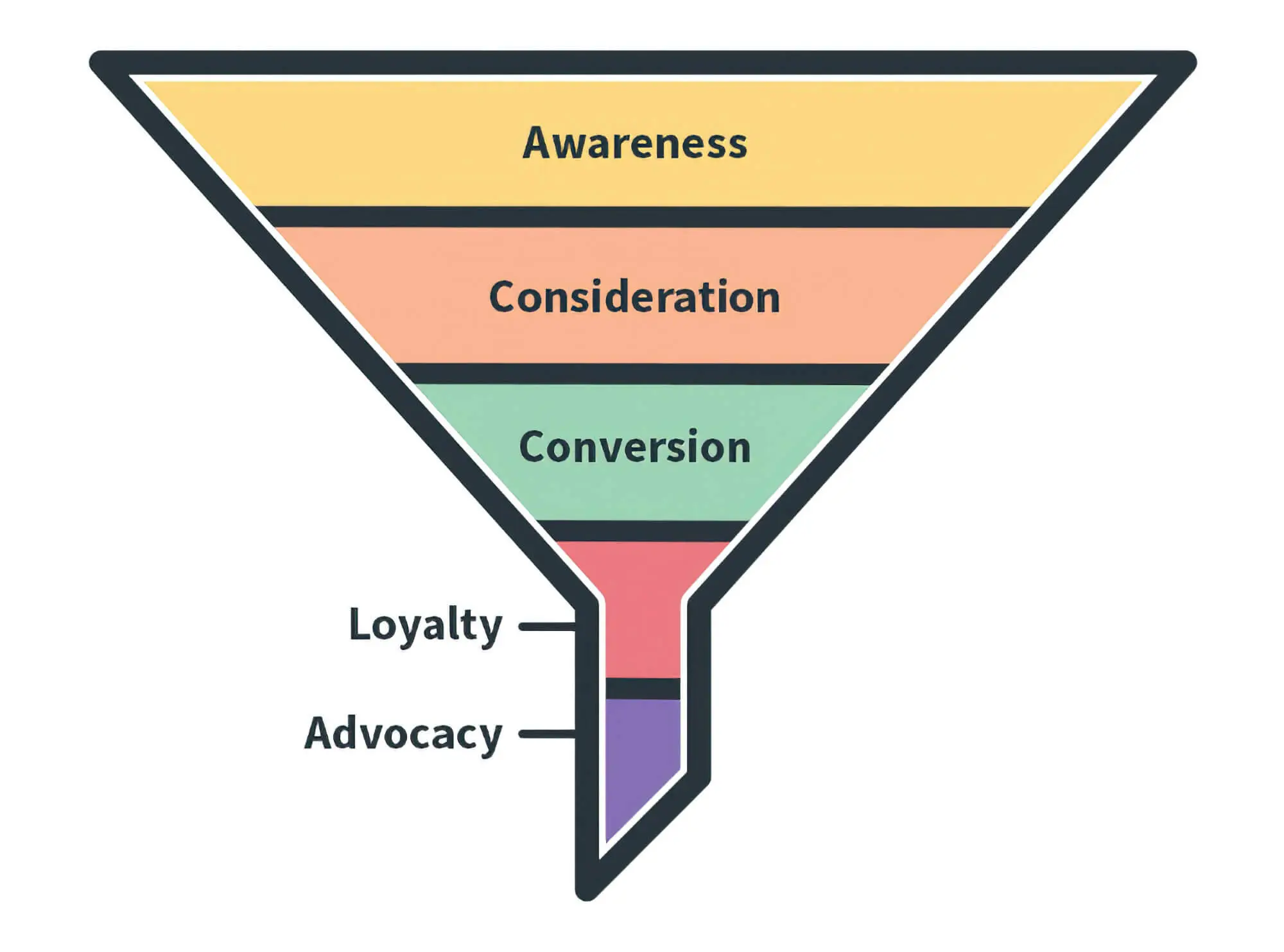
This funnel works in several stages, usually illustrated as having around 5-6 phases, tracking the user or customer journey from when they hear about a brand to when they become active promoters.
A customer’s awareness of a brand will rarely begin with the company website. Customers often research something they want or need, whether a product or a service. An integral part of this research is reading reviews, weighing up what looks good, reading articles about their desired service or product, and building relationships as they find out more about what they need.
This process is usually referred to as the top of the funnel. In this research phase, they may come across brand names being dropped in the content they consume, and if it seems relevant, almost like a beginner’s guide to link building or compelling, they may visit the brand’s website.
This is the stage that link-building techniques tend to target, getting other websites to endorse you or your brand in their blog posts by providing traffic with a link back straight to you. Typically, backlinks are distributed with strategic anchor text via a direct brand mention or a link to further information that your website has to provide. This yields several major benefits and helps you discover new opportunities.
A successful link-building campaign establishes your site’s authority in the eyes of Google
The importance of understanding the algorithms Google uses can’t be understated. Search engines account for nearly every interaction on the internet, and Google alone is responsible for 5.6 billion searches every day.
Google judges a website based on how well it runs and how trustworthy and authoritative it is when someone links from other quality websites and establishes a robust link profile. Everything counts, from providing the best information about a particular topic to being endorsed by other quality websites!
The more backlinks your site has from credible sources will indicate how valuable your brand is to consumers, making you more relevant to your target audience and helping your site rank higher.
Increases Web Traffic
Like foot traffic and the number of people visiting a storefront, web traffic measures how many people visit a website. The more people coming to your site, the more chance there is of a conversion or a sale.
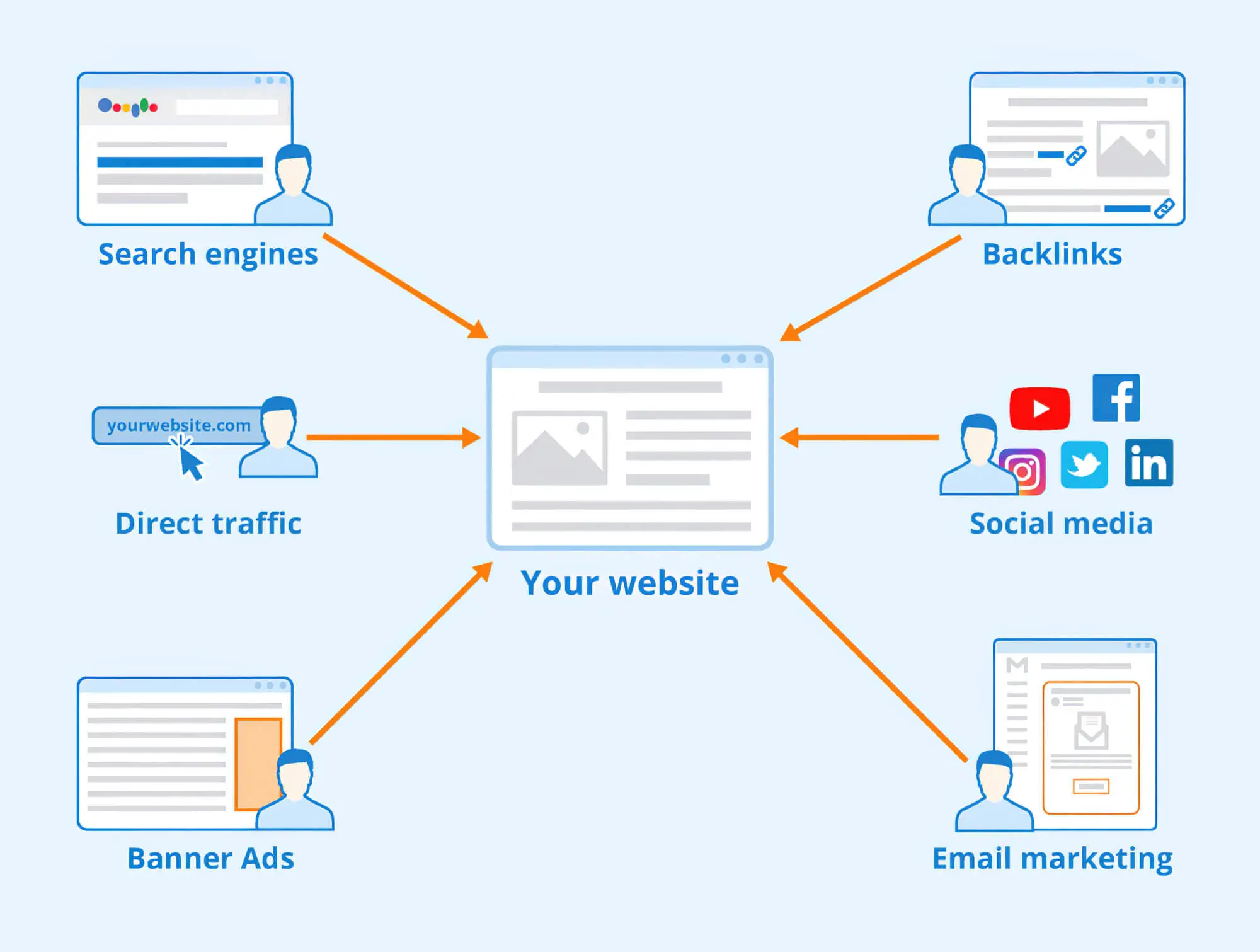
Broken link building increases web traffic in two ways, — the more your link appears in a piece of content that is read by others, the result when you get links from other websites to feature you, the more likely it is to generate referral traffic when these links come from reputable sources. And, the more links you have from sources already deemed authoritative by Google, the more likely you will be found in organic search results when someone searches the web.
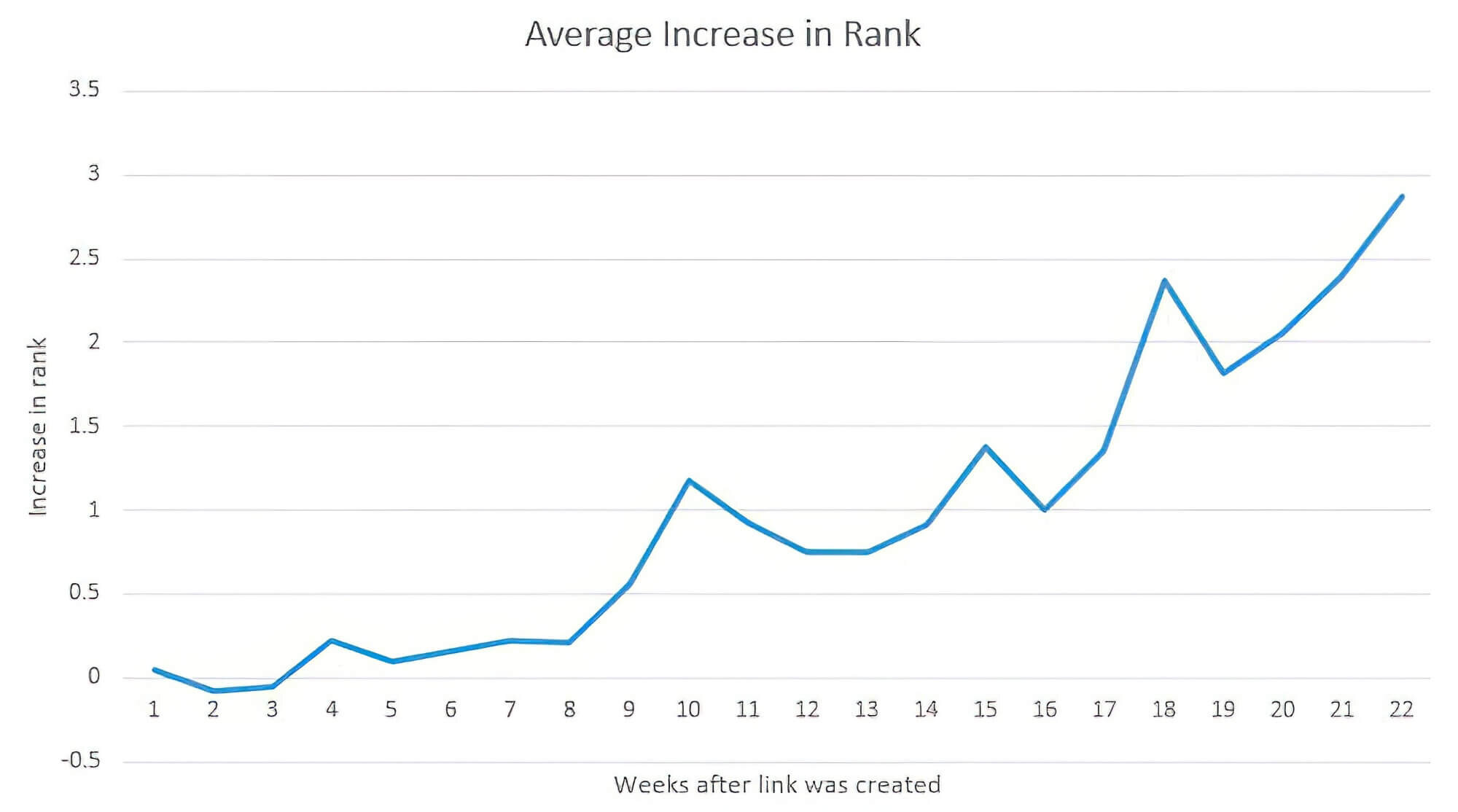
Better Site Metrics and SEO Scores
Site Metrics quantify how your audience receives your business’s online presence. This includes organic traffic, conversion, sales, click-through, and bounce rates. This information is essential to understanding how your audience interacts with your website and cyberspace storefront.
An SEO score is how search engines rank the quality and relevance of your website according to your niche. Naturally, this rank is a mere projection, but it’s based on solid metrics, such as:
- How many times do specific keywords from authoritative websites and keyword research appear in your copy and content
- The quality of your content
- How evergreen (relevance over time) your content is
- How many sales do you have
- The ratings of your online reviews, the number of links pointing to your site — and securing high-quality links back to your site.
In a recent study from SEMrush, which analysed over 600,000 websites for quality information vs page rank, those that yielded lower bounce rates and an increased time on site, which typically looks like higher rankings than those that do not increase time on site.
So, Think again if you can build links to your website without exploring new link opportunities and hope for the best! To improve your website’s overall metrics, you must pay attention to every aspect, including individual web pages. From your website’s load time to offering the best information possible for a particular subject, take pride in your work — and you will be rewarded!
Better Revenue Generation and More Sales
Link building has been directly attributed to higher revenue and better sales. Your company can be featured in copy and content of similar brands, increasing your chances of being found. As a result, your traffic increases through tactics like resource page link building, gaining valuable links from websites, and generating further sales.
Improved Professional Relationships
Link generation can be done in many ways, and some are quite direct, such as guest posting outreach. As a result of these interactions, you may establish mutually beneficial link-building in SEO examples within your industry.
No amount of money can buy the value of a “you scratch my back, I’ll scratch yours” partnership, and link-building provides a great way to do so.
How Link Building Interacts with On-Page SEO
Up until now, we’ve spoken almost exclusively about link building, what it is, and the benefits it carries. However, the purpose of this article was to stipulate precisely the relationship between link building and on-page SEO.
The fact is that they are opposite sides of the same coin. Link building is part of a broader set of off-page SEO methods involving various strategies. In the same way that on-page SEO deals with the customer experience on your website, off-page SEO deals with customer experience before they reach your website. While off-page SEO does consist of several techniques, link building is generally at the centre.
In short, content marketing and link building help establish a strong online presence and enhance visibility, and on-page ensures that your link to your site presents the best presence. When done the right way, the relationship between them is reciprocal and synergistic.
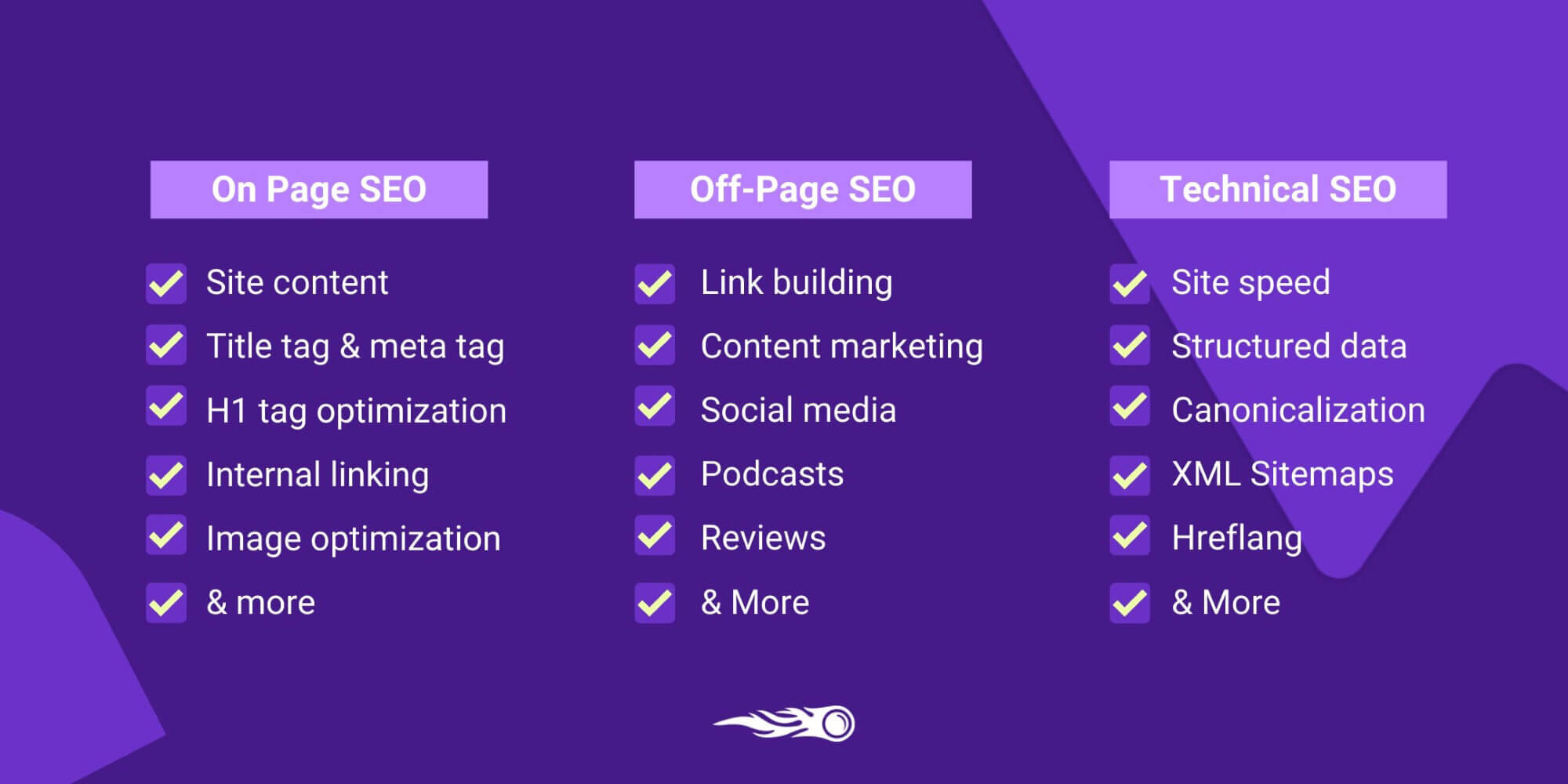
Think of it this way. Suppose you were to spend hundreds of dollars on content creation to get people to your store. Would you then leave your building messy, with dust on the shelves, items not in stock, broken inventory, dirty walls, floors without websites link to, countertops, and doors that won’t open or close properly? Of course not, so why would you do it digitally?
Link building and all off-page SEO techniques are established based on guiding people to your digital storefront — which happens to create opportunities for websites to get a link to link to your content and is the best in town. Once they’re there, you must make the best impression to maximise engagement immediately.
On-Page SEO
The process of getting on-page SEO right may seem obvious, but you’d be surprised how frequently brands and websites neglect this part of their online presence. Search Engine Optimisation isn’t just a one-and-done thing — it’s a holistic process designed to increase the attractiveness and functionality of your website. So, to go online and spend weeks trying to earn links, building countless links from external websites, only to completely ignore your website’s functions is detrimental and negates the effort spent building links!
This is where building the process for SEO comes into the equation. How will you ensure that your website is working the best it can? What steps can you take to guarantee that when customers click a link — they’re being taken to a link-worthy destination? Here’s a quick rundown:
Target Keywords In Your First Paragraph
There’s a reason that most SEO techniques, whether on-page or off-page, utilise keywords. These phrases and words are valuable to your SEO campaign and attract more links than you will ever know. Keywords are the phrases your projected audience uses to find you. So ensuring the worthy content appears consistently (although not too much; keywords should make up around 1%-3% of the copy and content on your site) is key to ranking well, according to search engines.
The importance of using these keywords to acquire links cannot be overstated. In general, you should include one of these keywords in the first paragraph so that your article is immediately relevant to your audience and leaves room for further keywords in the next paragraph.
It’s essential to understand the intent of the search term and make sure the copy being read matches the intent. Is it navigational, informational or transactional? Making the copy align with the intent increases the likelihood of ranking.
Using H Tags In The Appropriate Spot
“Tags” are containers within HTML code for certain elements. They are generally encased in triangular brackets, for example:
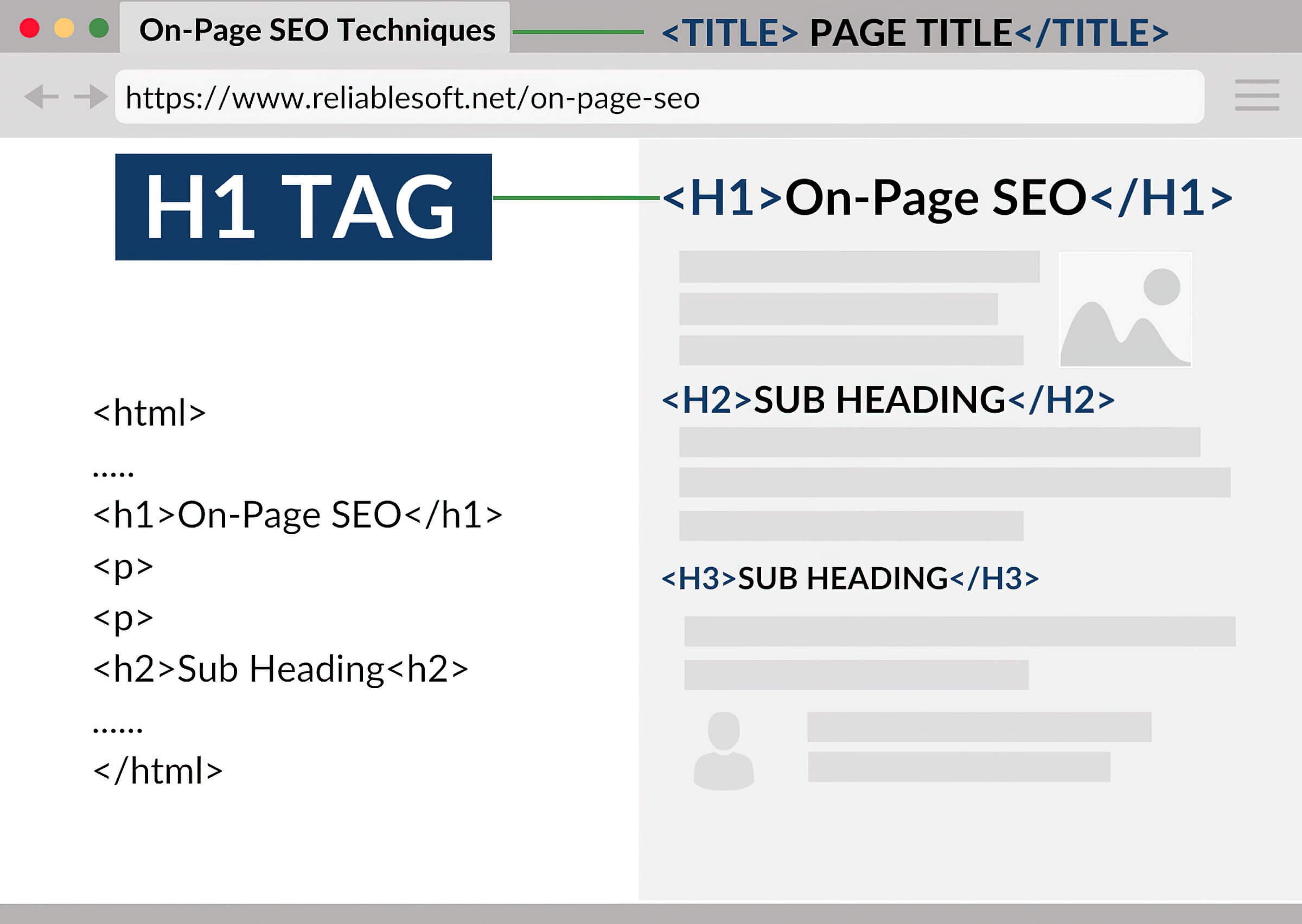
The above tag is known as an “h” tag, with an “h” heading. Heading tags are generally used as titles, meaning that when the HTML code is compiled into a functional website, the above tag will result in the main heading that reads “On-Page SEO.”
H1 tags are generally used to code in main headings, while h2 is typically used for subheadings, h3 for sub-subheadings, and so on. You must spread your h tags appropriately across your content to ensure your website looks good, reads well, and that your keywords are correctly spaced out for search engines. Headings are essential signals for SEO and your customers. They will likely engage with you if they see a keyword in your content’s prime spot.
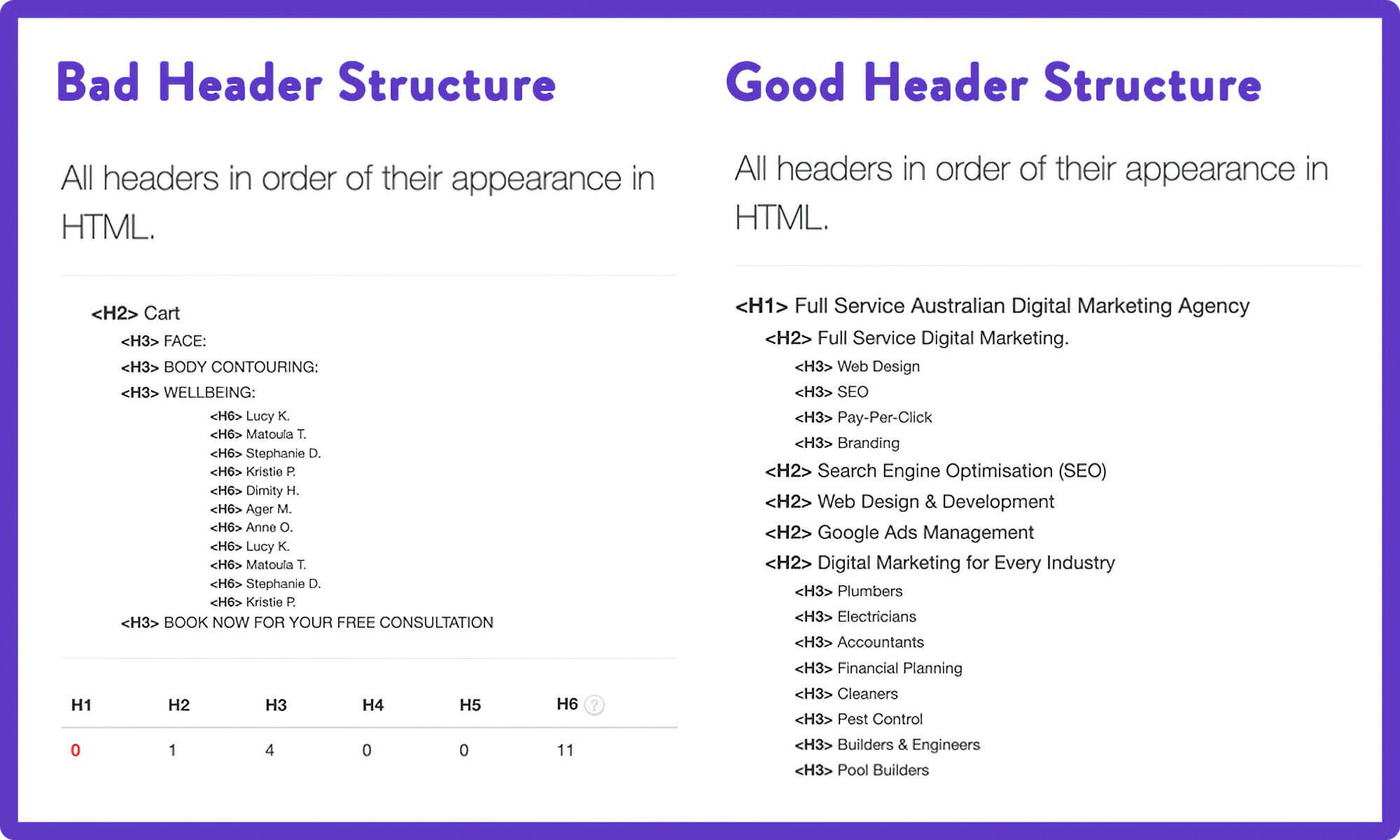
Putting Appropriate Links In Your Content And Copy
Although inbound and external links have been our main focus thus far, it’s also important not to neglect links to content outside your website. The reason is that if you link to high-quality, trustworthy content within your niche, search engines will associate the domain authority and authenticity of those sites with yours.
Ensuring you’re making opportunities within your copy and content to link to high-quality, evergreen content within your industry is essential. Relevant industry statistics from credible sources are excellent examples of when to incorporate links to other websites:
- Industry statistics from credible sources
- Glossaries to definitions of any slang that you have used
- Official brand websites when discussing a specific brand
- Help guides and 10x content
Make Sure Your URLs Are Relevant
The most basic form of on-page SEO optimisation is to simplify your URLs, straightforward and to the point. If possible, get a keyword in your URL.
When Google is crawling web pages, one of the first things they’re looking at is the URL. If your URL is not clean and simple, it will negatively affect your rankings and your customer’s ability to find the page again. Like trying to read a book, the chapter titles help give an overview. Similarly, URLs do the same for websites.
Write Content that is Relevant And Unique
The search engine rankings and the number of visitors determine a website’s value. Search engines determine the value of your website based on its functionality and content. Customers judge your website based on how well they can navigate it, find the products or information they need, and make purchases.
No matter what your business is, you should always have a regular content schedule, targeting your demographic in every possible way. Ensuring you get this content right is critical to generating a reputation as an authority in your field and a source of quality answers. When drafting content, ensure it is relevant, unique, and appealing to your audience.
The schedule itself is an essential element. Be sure to research your demographic’s browsing habits and media, then develop a schedule that will allow you to design, create, and release content regularly, including on social media. Maintaining consistency with your schedule is key, as a consistent company generates more trust with their audience, increasing the likelihood of conversions.
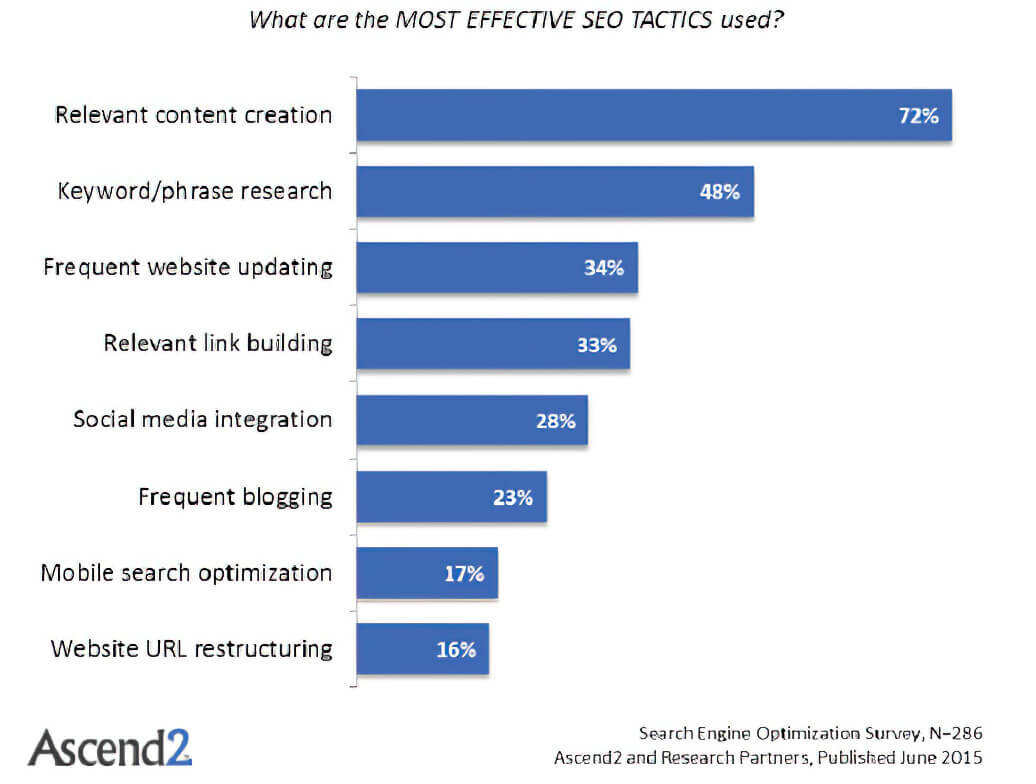
Putting It All Together
When setting up your website, you want to ensure it’s at least functional. But before you get your name out there, you want to ensure your on-page SEO is on point as a way to build. Otherwise, when people get to your website, it won’t be long until they click on it again.
And this is what highlights the ultimate relationship between on-page SEO and link building. Again, you wouldn’t spend hundreds of hours and thousands of dollars creating the perfect advertising campaign to present your customers with a storefront and inventory that looked straight out of a B-grade horror film from the 50s.
It would be best if you first focused on optimising the linking page and then making a great, high-quality website that works efficiently. Then, go through on-page optimisation to make your top pages the best they can be. Images should be crystal clear, content should be regarded as quality content that attracts links and is relevant and informative, web pages should load quickly, metadata should be optimised, keywords should be plentiful, and all links and buttons should work.
Implementing a combination of off-page SEO strategies over time will yield positive business results and enhance search engine rankings. You’ll see a rise in revenue, conversions, and your position on the SERPs. Once established, you can focus on generating all kinds of links by capitalising on readily available opportunities and targeting specific keywords.
In today’s business landscape, having a website is essential; however, avoiding employing spammy link-building techniques such as buying links is crucial. An online business that makes a good impression is necessary; a vital part of ensuring you’re making a good return on investment is using online tactics like link building and on-page to generate customers and sales and manage your reputation. Engaging in effective link-building campaigns is crucial for successfully managing your brand and achieving exceptional company growth.
The internet is a maze, and it’s challenging to find your place in it — but relying on solid SEO and marketing techniques will ensure that you are the reward at the end of the maze rather than the mouse. But we ask that if you need any help, contact us. Our team at sitecentre® has accumulated extensive knowledge and experience in all aspects of SEO on the Sunshine Coast and is eager to assist you in achieving your goals.
We wish you the best of luck. See you in the next article!

